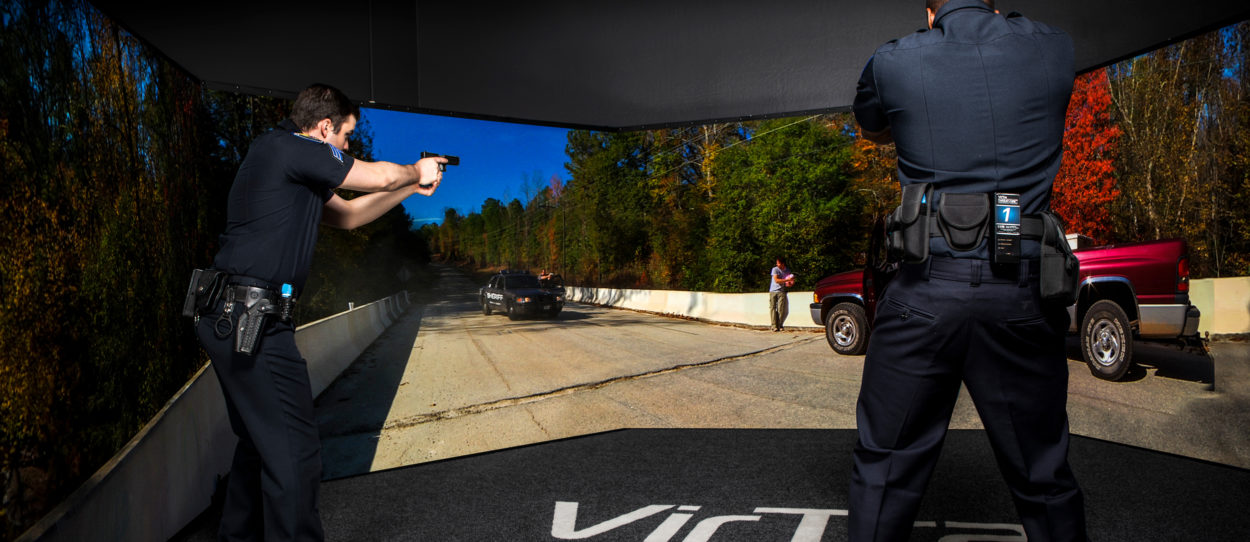
Stress is an essential addition to a trainee’s regime. Critical decision-making and problem solving become more difficult in a stress-induced atmosphere and requires plenty of practice to learn how to navigate these situations. If a law enforcement trainee cannot learn to execute the correct actions in a controlled environment, what are the chances they will in the unpredictable environment of the field?
There are multiple ways to introduce stress. However, keep in mind that these stressors should only be added after trainees are competent in the desired action or rule. Failure to understand a technique before the pressure is added will only result in confusion.
Motivation During Simulation Training
Administering pain, or threatening to, causes trainees to become anxious and compliant. Instructors can use this to their advantage, as physical pain removes the resistance of “I have to.” Use of force training is filled with commands which leaves students thinking “I have to complete this scenario” rather than “I am excited to learn from and engage in this scenario”.
Physical pain replaces this resistance with motivation while adding an extra layer of stress. Pain forces trainees to become engaged with the training scenario and teaches them to complete the exercise while overcoming the distraction due to the perceived risk of pain.
VirTra’s use of force simulations offer a pain element through the Threat-Fire®, a small box that clips onto a trainee’s belt. When activated by the instructor, the Threat-Fire releases a small electronic impulse that adds real-world consequences to the simulations. This effectively adds stress and emotion to the wearer while enhancing the effectiveness of simulation training.
Fear of Failure
Instructors can use their trainee’s fear of failure to their advantage. People are painfully familiar with negative emotions caused by failing—disappointment, anger, frustration, sadness—and strive to avoid these emotions. Add this to the idea of failing in front of peers and more negative emotions are added—embarrassment, shame—another avoidance.
Start by having trainees perform an exercise in front of their peers and watch as the added pressure sparks fear, motivation or anxiety. Overcoming this fear requires a significant amount of practice for both trainees and instructors, as instructors must learn to work with reactions ranging from forgetfulness to confidence.
Fear of failure comes with other training benefits. Continuing with the idea of performing in front of a class, students in the audience are inspired to learn from the mistakes and correct choices of those who have gone before. As students make the conscious decision to perform a certain way, even if it is to avoid embarrassment in front of an audience, the lesson is better remembered.
Simulator Training & Competition
Using competition as a stress-inducer is tricky, as the amount of stress created depends on the student. The goal of training competitions is to force trainees to focus on and complete a situation, to master corresponding physical and mental skills, with the added pressure to perform better than a competitor. The problem is that some trainees thrive in competition whereas others become flustered.
The type of pressure built also depends on the type of competition. Will the winner be the student who completes a scenario the quickest or the one who does a better job overall? If time is of the ultimate essence, students may forget a step as they race to the end. On the other hand, the stress of knowing they must follow a checklist of instructions perfectly, heightened by a competition, may cause forgetfulness. Practice placing trainees in a variety of competitions so they learn from different types of stress.
Stress and heightened emotion are powerful tools in the classroom. These components ensure trainees understand how to perform in the high-emotion situations they may face in the field. VirTra simulations are a great resource for adding stress while teaching students through a variety of situational outcomes. Contact us to learn more.
Train hard, stay safe and keep it consistent.







